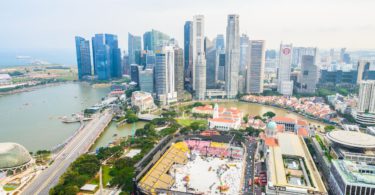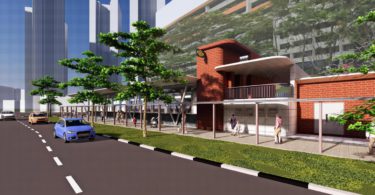By Anisa Pinatih
Governments may be implementing legislation and offering incentives to motivate developers to build Green housing, but if market forces are high, Green housing provision will be able to progress without any state intervention.
Knowing the willingness-to-pay (WTP)—the premium prospective buyers would be willing to pay for a unit—can estimate the market forces of Green housing, and hence provide information on stakeholders’ decision-making. For example, real estate investors’ preferences for condominium units in Singapore could be influenced by, among others, the Building and Construction Authority’s (BCA) Green Mark certification.
EVIDENCE FROM SINGAPORE
A research collaboration between the Energy Studies Institute at the National University of Singapore and the Institute for Economy and the Environment at the University of St Gallen examined the Influence of BCA’s Green Mark schemes on buyers’ behaviour.
In 2011, they surveyed buyers who were in the process of buying a newly launched condominium unit (in the context of real purchases); buyers who were looking to buy a property for occupation or investment. The respondents were predominantly male (67.7 per cent), of Singaporean nationality (85.5 per cent), in the age group of 35–44 years (51.6 per cent), and with an household income of above S$6,000 per month.
The results suggest that the price premium buyers would be willing to pay for Green certification varies within the different levels of the Green Mark Scheme, ranging from 3.78 per cent for the Certified award to 7.98 per cent for the Platinum award.
As a comparison, a preliminary study by BCA indicates that the cost premium of Green Mark Certified buildings over code compliant buildings ranges between 0.3 per cent and 1 per cent whereas the cost premium for Green Mark Platinum buildings ranges from 2 per cent to 8 per cent.
The cost premium is expected to decrease steadily as a result from economies of scale and learning effects of industry players. The research results thus suggest a strong business case for developers of Green buildings. Developers and investors can bear the additional costs of developing Green buildings since the reward for doing so in terms of extracting higher sales premiums proves to be promising.
EVIDENCE FROM MALAYSIA
Buyers in Malaysia are as sensitive to Green benefits. A survey in 2010 by GreenA Consultants indicates that a majority of interested buyers would be willing to pay at least 5 per cent extra for Green housing. The detailed breakdown* is illustrated below:
| Acceptable increase of price for Green houses | The willingness-to-pay |
| Same price | 47 per cent |
| 5 to 10 per cent | 35 per cent |
| 10 to 15 per cent | 5 per cent |
| Over 15 per cent | 13 per cent |
A researcher at the School of Business, Sunway University, Malaysia surveyed the WTP of 299 households in Kuala Lumpur in 2011. In general, house buyers were willing to pay more to live in a sustainable neighbourhood; for example, to pay 8 and 19 per cent more to live in a house with bamboo flooring and recycled ceramic wall tiles respectively; and 12.73 per cent more to live in an area with landscaped parks.
Also read: The need for a resiliency framework and accreditation of buildings in Malaysia
WHAT SHOULD WE BE CAUTIOUS WITH?
Socio-demographic characteristics such as age, gender, income and education are key factors determining WTP for Green products in general. Among these, income and education have been often found to be positively correlated with WTP for environmentally friendly products. The evidence from Singapore and Kuala Lumpur above involved only a sample population from a particular layer of society.
The socio-economic status of homebuyers
A similar research in Nanjing shows that the WTP for Green attributes relative to the regular housing’s is largely influenced by the socio-economic status. They consider the health benefits, the eco-friendliness and the non-toxic construction materials used. Only the rich are prepared to pay for Green apartments for the sake of improved comfort.
For the majority, Green apartment buildings are only attractive when they are located in a good neighbourhood that offers clean air and good job accessibility. In other words, the choices are influenced by both the dwelling attributes and the broad living environment. In fact, consumers care more about a cleaner environment than about saving energy.
Motivated by the economic incentives
Apart from moral or altruistic reasons, residents’ WTP for Green housing in Hong Kong was mainly motivated by economic incentives. Green housing attributes that can directly reduce residents’ utility bills corresponded to greater WTP. The relative preference of Green housing attributes are as follows:
- Water-saving shower heads (100 per cent)
- LED lighting (97.4 per cent)
- Photovoltaic panels (77.4 per cent)
- Greywater recycling system (59.9 per cent)
- Timber from sustainable sources (57.8 per cent)
- Prefabricated building elements (43.5 per cent)
Household income and environmental attitude are strong predictors of WTP for all the six Green housing attributes above. The wealthier and the more pro-environmental one is, the more willing one is to pay more for Green attributes.
WHAT’S NEXT?
Educating the public about the benefits of Green design is the key. A study by researchers at the Department of Real Estate and Construction Management, Tsinghua University, and the School of Urban and Regional Science, Shanghai University of Finance and Economics, shows the important role of public information in increasing homebuyers’ WTP for Green housing in Beijing.
Read: How Green Accreditation Can Benefit Construction Business
In December 2014, they randomly selected 100 households in each of the four complexes under study. One significant finding was that WTP for Green housing increases dramatically after being educated about the benefits and impacts. This suggests that households will be encouraged to buy Green apartments if they have access to more concrete information.
Finally, the research also suggests that the officially certified and non-certified complexes have similar capacity to increase homebuyers’ WTP if they are under the same ‘Green’ developer’s name, suggesting that developers may enjoy the benefits of being seen as ‘Green’ and commensurate spillover effects by only having some of their projects certified.
*Source: L. Bertrand (2010). How can developers harvest the benefits of Green building while reducing the risk and cost of Green building accreditation. Conference on Sustainable Building South East Asia
Disclaimer: Construction+ makes reasonable efforts to present accurate and reliable information on this website, but the information is not intended to provide specific advice about individual legal, business, or other matters, and it is not a substitute for readers’ independent research and evaluation of any issue. If specific legal or other expert advice is required or desired, the services of an appropriate, competent professional should be sought. Construction+ makes no representations of any kind and disclaims all expressed, implied, statutory or other warranties of any kind, including, without limitation, any warranties of accuracy and timeliness of the measures and regulations; and the completeness of the projects mentioned in the articles. All measures, regulations and projects are accurate as of the date of publication; for further information, please refer to the sources cited.
Hyperlinks are not endorsements: Construction+ is in the business of promoting the interests of its readers as a whole and does not promote or endorse references to specific products, services or third-party content providers; nor are such links or references any indication that Construction+ has received specific authorisation to provide these links or references. Rather, the links on this website to other sites are provided solely to acknowledge them as content sources and as a convenient resource to readers of Construction+.











